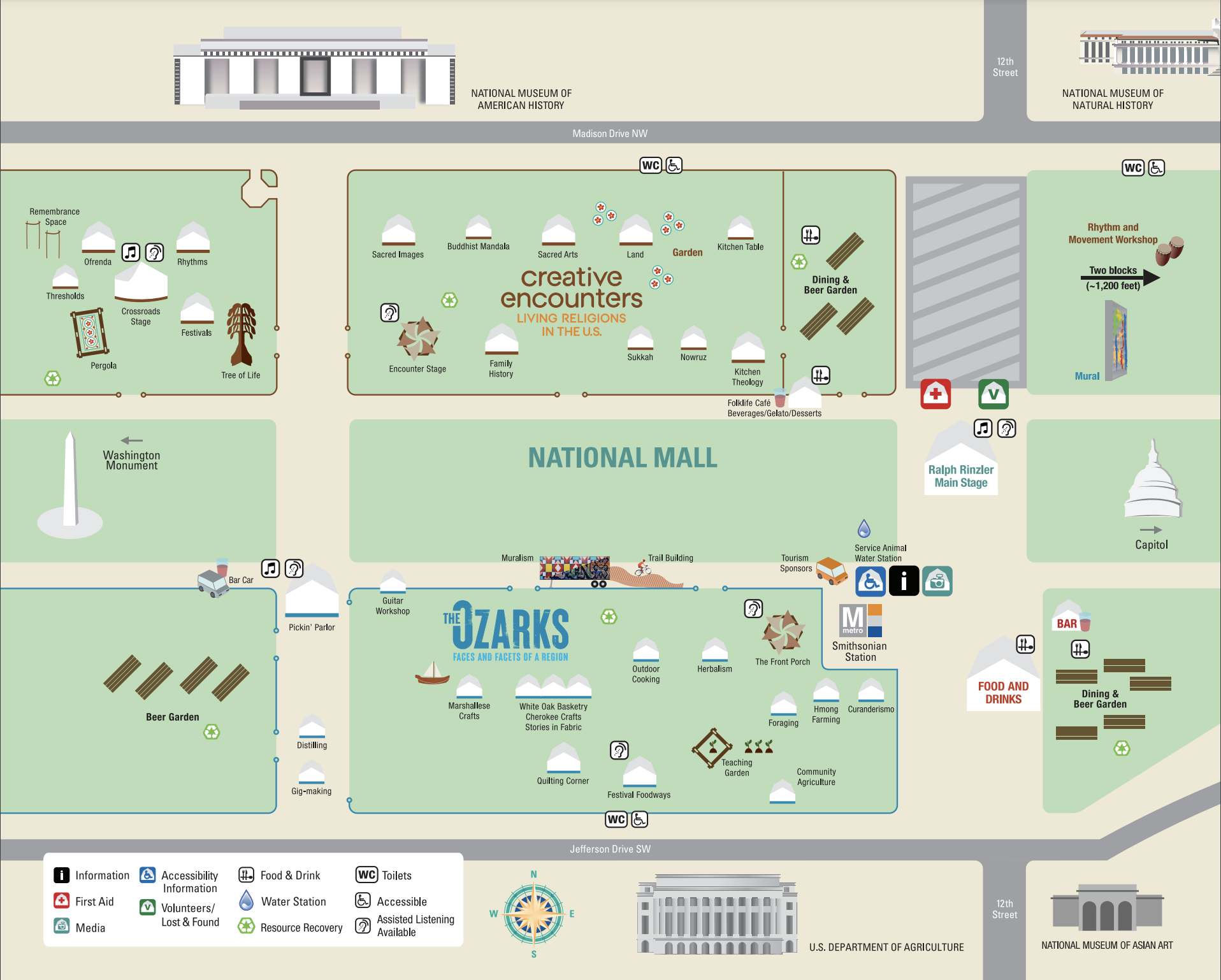THE OZARKS: FACES AND FACETS OF A REGION
June 29–July 4 and July 6–9, 2023
“Welcome to the Ozarks, an American region with no single story to tell, a place more complex than you imagined but maybe just as colorful as you hoped.”
—Dr. Brooks Blevins
Arcansas. Aux arcs. Ozarks. The place name has its historic origins in the language the Native Illini peoples of the Mississippi River Valley used to refer to their southern neighbors who dwelled in the lands where the Arkansas River empties into the Mississippi. It was borrowed and adapted by French and British colonial settlers in the mid-eighteenth century as they sought names for their outposts in the region. In the early 1800s, a mapping expedition conducted by representatives of an infant nation, the United States, applied the designation “Ozark Mountains” to the highlands stretching north and west of the Arkansas-Mississippi confluence. By the early twentieth century, the physical boundaries of the formal Ozarks, at least in cartographic terms, had been reduced to the highlands north of the Arkansas River.
Today, the physical Ozarks is generally recognized as a geographic region stretching across portions of Missouri, Arkansas, Oklahoma, Kansas, and Illinois that is known for its distinct blend of karst and caves, springs and streams, hills and hollers, forests and fields. The cultural Ozarks is a human region built from the ever-changing cultural practices and traditions of the peoples who have and continue to inhabit this beautiful yet demanding and fragile terrain.
The two—the physical and the cultural—are deeply, inextricably intertwined. A history of isolation and seclusion, coexisting, often in tension, with migration in and out of the region, has and continues to shape the human landscape of the Ozarks. The enduring presence of First Nations peoples, the traces of French and Spanish colonization, the contributions of Scots-Irish, Germans, enslaved Africans and their descendants, urbanization, industrialization, tourism, and the arrival of refugees, migrants, and laborers from places as diverse as Vietnam, Laos, the Marshall Islands, Cuba, Mexico, and Central America all come together today to create a place that is far more complex and heterogeneous than it is often given credit for in the popular imagination—a place with plentiful examples and models of persistence, innovation, and transformation.
We invite you to join us at the 2023 Smithsonian Folklife Festival where we will dig deep and explore this unique North American region and the varied groups who call it home.

